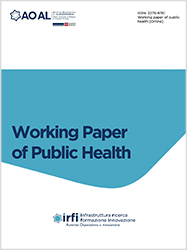Malignant pleural mesothelioma: review and analysis of clinical studies presented at ASCO 2015
Accepted: 11 July 2016
All claims expressed in this article are solely those of the authors and do not necessarily represent those of their affiliated organizations, or those of the publisher, the editors and the reviewers. Any product that may be evaluated in this article or claim that may be made by its manufacturer is not guaranteed or endorsed by the publisher.
Introduction: 21 studies on pleural mesothelioma were presented at ASCO 2015. Of these the most clinically relevant are two phase III medical therapy studies, NGR015 and MAPS. NGR015 compared patients treated with NGR-hTNF vs placebo in combination with best investigator choice (BIC) chemotherapy. MAPS compared patients treated with pemetrexed+cisplatin+bevacizumab vs pemetrexed+cisplatin. Methods: This article describes the results of the two studies and briefly reports on other studies of interest in this disease. Results: In NGR015 the primary endpoint was not achieved, but survival (OS) and progression-free interval (PFS) of patients with short free interval after first-line treatment were interesting. In MAPS the addition of bevacizumab showed an increase in both PFS (9.59 vs 7.48 months) and OS (18.82 vs 16.07 months). Conclusion: In recent years there has been growing excitement in the study of mesothelioma, which in the clinic translates into the possibility of combining chemotherapy with new anti-vascular and anti-angiogenetic drugs that can prolong survival in subgroups of patients.
PAGEPress has chosen to apply the Creative Commons Attribution NonCommercial 4.0 International License (CC BY-NC 4.0) to all manuscripts to be published.

 https://doi.org/10.4081/wpph.2015.6716
https://doi.org/10.4081/wpph.2015.6716




